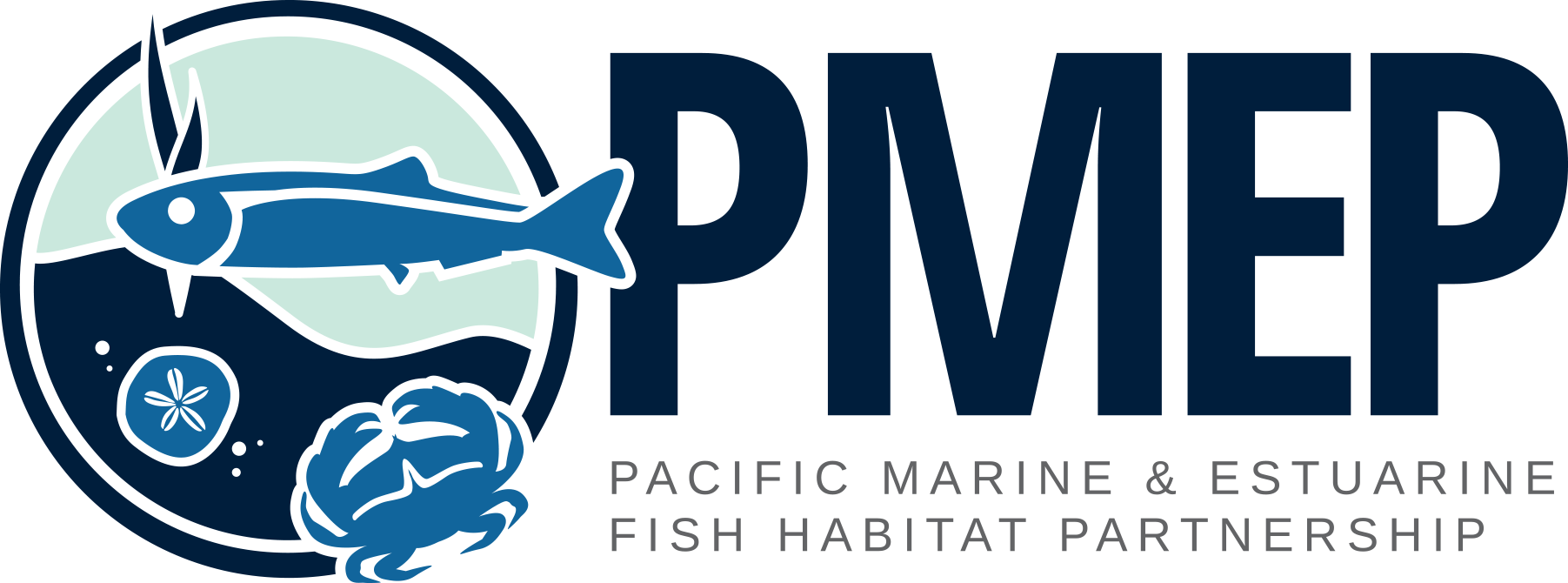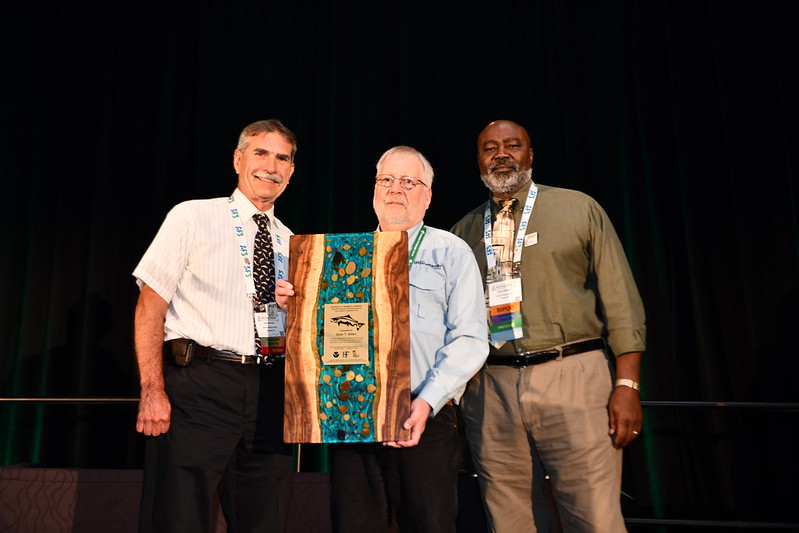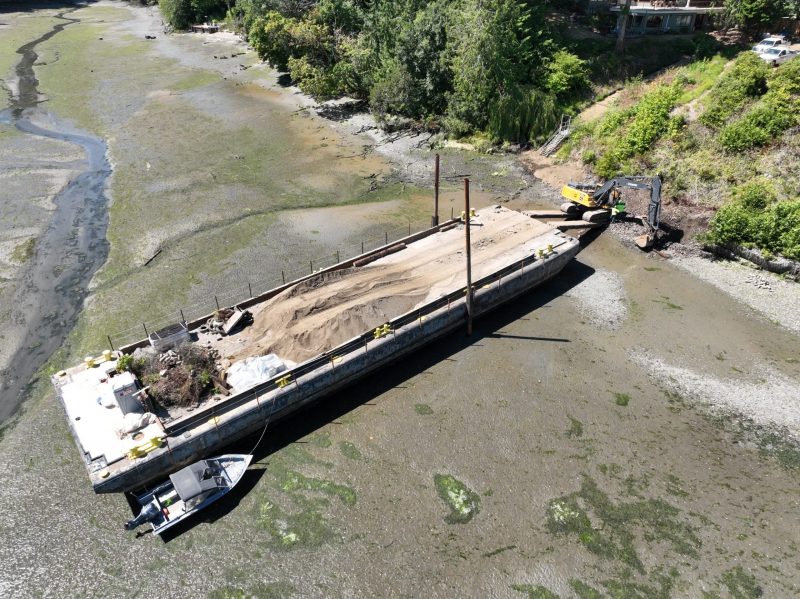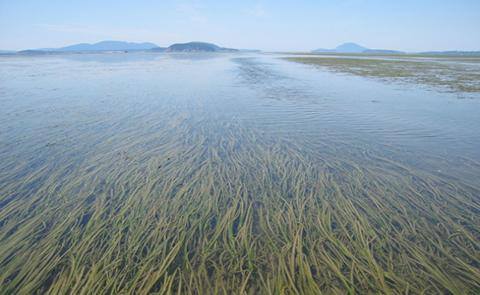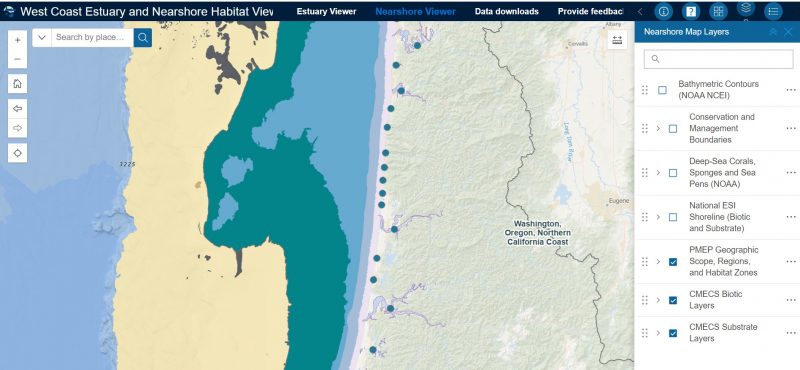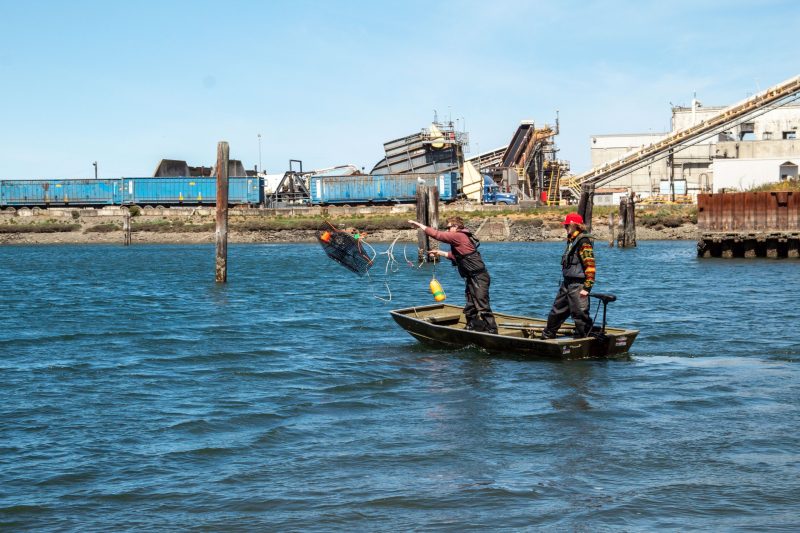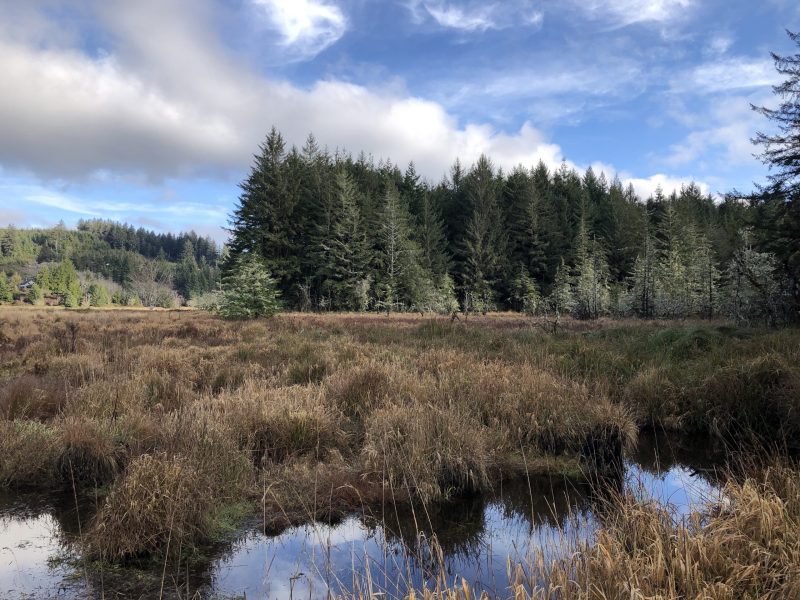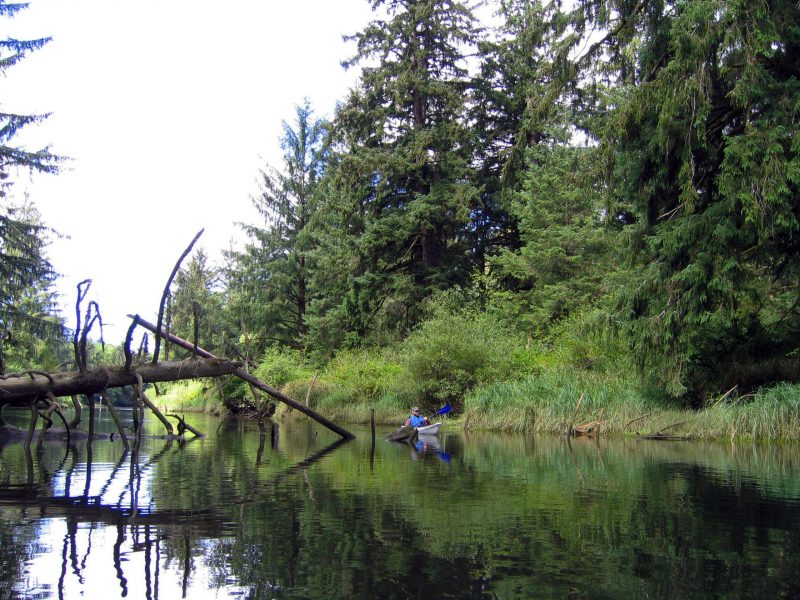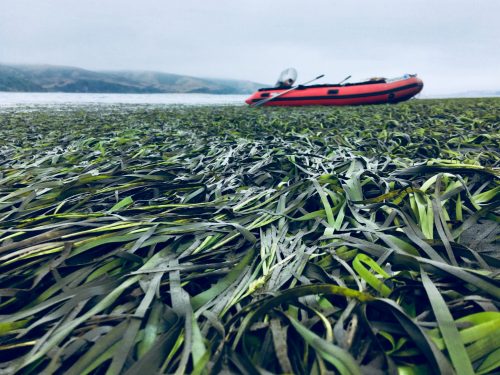Our own Stan Allen, Pacific Marine Fisheries Commission, was awarded the Stanley A. Moberly Award for Outstanding Contributions in Fish Habitat Conservation at the 2024 American Fisheries Society meeting in Honolulu, Hawai’i. The award was established in 2019 to annually recognize efforts of individuals, groups, or projects with an outstanding, long-term record of success in research, management, policy, communications, education, or other fields that support fish habitat conservation.
Stan has had a long and distinguished career in fisheries starting with Idaho Department of Fish and Game in 1980 as a Biological Aid and working up to the Information Resource Data Manager, where he was responsible for building a consistent and verifiable river database. This work resulted in the protection of over 40,000 miles of streams in the Columbia River Basin from additional hydropower development. Stan has worked at the Pacific States Marine Fisheries Commission since the 1990’s and has been a Senior Program Manager for 31+ years. His work has included the development of the CalFish system to support habitat efforts for anadromous fish and development of StreamNet, a cooperative data effort that has been the foundation for the support of fish conservation in the Pacific Northwest. He has also managed countless fisheries projects, currently including 80 projects with 150-175 employees, such as the reintroduction of salmonids in California Central Valley tributaries, the Klamath River watershed rehabilitation, and Pacific Coast, in particular in California, fish passage barrier identification, removal, and mitigation. He is a long-time National Fish Habitat (NFHP) Board member and now is the Vice Chair of the Board, ensuring NFHP continues its incredible fish habitat conservation work. Stan has been an active member of PMEP committees since PMEP was initally formed as a fish habitat partnership in 2012.
